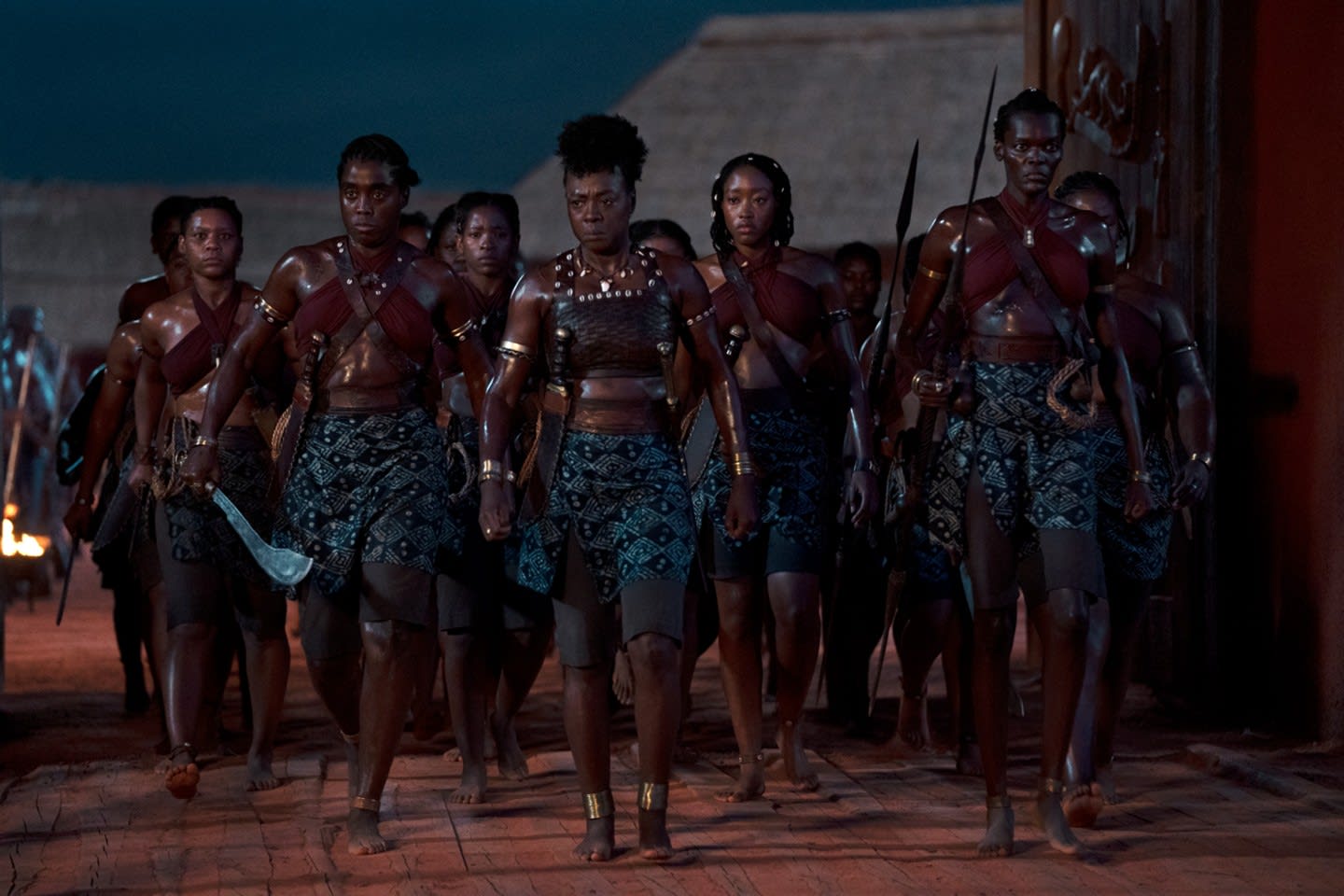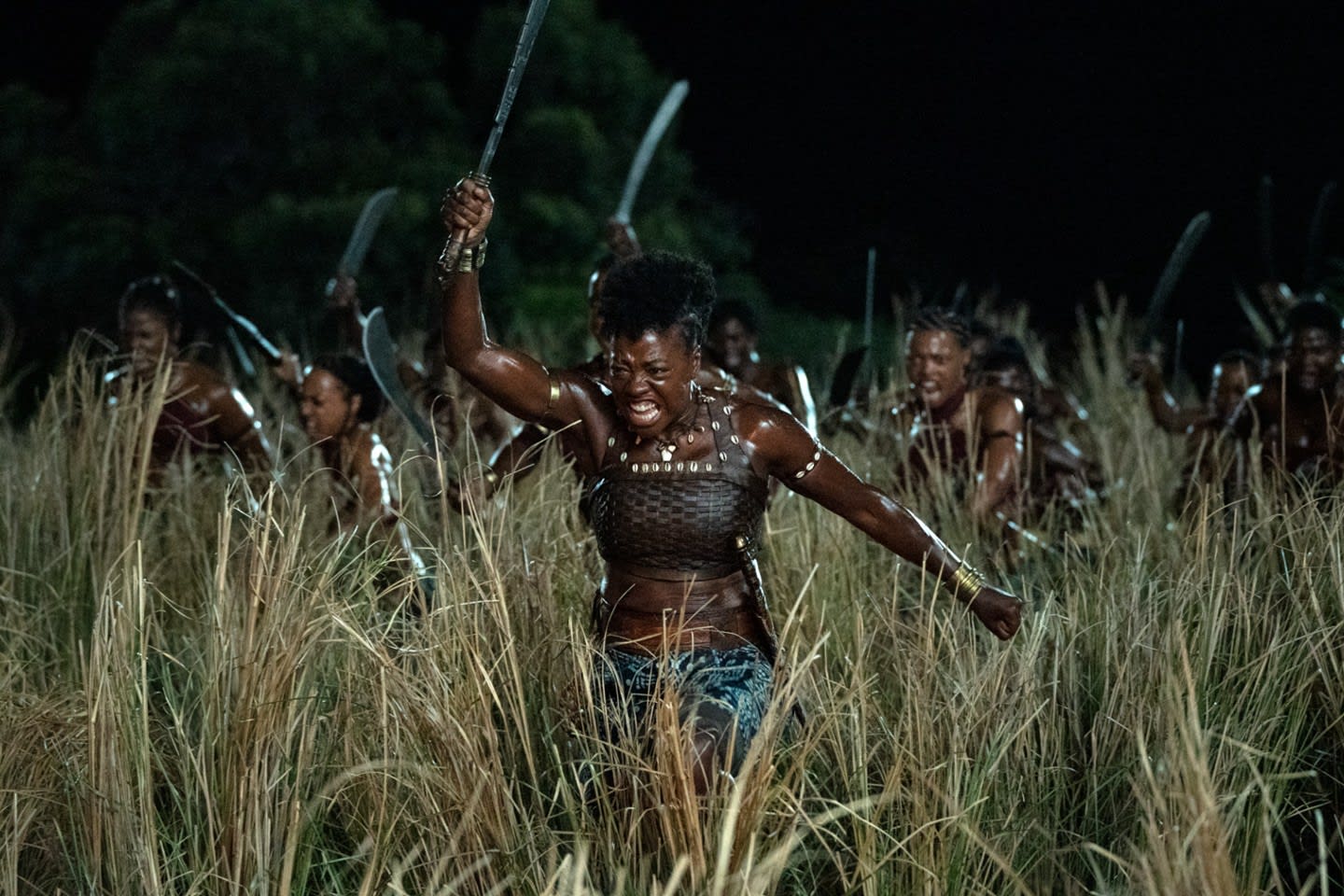The incredible historical epic The Woman King is about to hit theaters, introducing audiences to a fascinating new world. The talented Gina Prince-Bythewood directs Viola Davis and an all-star cast including Lashana Lynch, John Boyega, Sheila Atim, Thuso Mbedu, Hero Fiennes Tiffin, and more. Written by Dana Stevens and Maria Bello, with the story coming to Bello after she visited the country of Benin in Africa.
The Woman King is set in the 1820s, in the former African kingdom of Dahomey, which was located in what is now the country of Benin in West Africa. It focuses on the Agojie, the all-woman unit of warriors who protected the Kingdom of Dahomey for centuries. Davis stars as General Nanisca, a battle-hardened warrior who must train a new generation of warriors as outside forces threaten to encroach upon their beloved kingdom and destroy their way of life.
The Woman King is getting rave reviews thanks to its cast and direction. But also, it’s just an incredibly cool story. The real history of the Agojie, and Dahomey itself, is a fascinating one, inspiring, among other things, the fictional Dora Milaje of Black Panther. Before you see The Woman King in theaters, here’s what you need to know about the real warrior woman behind the movie.
How Were The Agojie Formed?

There’s some murkiness regarding the formation of the Agojie warriors, but regardless of which origin story you favor, they were part of Dahomey’s military structure for a long, long time. One version of the story is that it was the third king of Dahomey, King Houegbadja, who originally started the Agojie as a group of elephant hunters. Other historians believe it was actually Houegbadja’s daughter, Queen Hangbe, who first established them as her all-woman bodyguard, and that her brother and successor, King Agaja, first started using them in battle with neighboring kingdoms. While it was a necessity, as Dahomey’s warmongering mentality saw scores of their male warriors killed, the women soon proved themselves to be just as effective and fierce on the battlefield. While white Europeans referred to the Agojie as “Dahomey Amazons,” based on the Greek myths, they referred to themselves as Mino (“our mothers”) and occasionally, ahosi (“king’s wives”). However they began, they were an integral part of defending Dahomey.
Being Part Of The Agojie Was Strict & Intense

Similar to their origin, it’s not fully certain who became members of the Agojie unit. Some accounts claim Dahomey recruited for their military among foreign captives, as well as from native-born Fon women of Dahomey. Other accounts argue they were likely recruited straight from the ranks of ahosi. Some voluntarily enlisted, while others were sent to train as a means of getting rid of them if their husbands or fathers deemed them too unruly or difficult. While ages varied, some started training as a member of the Agojie as young as eight years old.
The training of the Agojie was intense and brutal, with elements of everything from the Knight’s Templar to the priesthood to Marvel’s fictional Black Widow program being found in their training. The women’s most aggressive tendencies were nurtured and cultivated for war, and to maintain their focus on this, they weren’t allowed to marry or have children. The Agojie were also trained to be inured to pain and indifferent to death. Part of their military training involved them storming head-on military defenses that were covered with the thorns of acacia trees, inches-long, razor-sharp spikes that the Agojie were trained to endure in order to reach their target. They were also commanded to watch and participate in the execution of prisoners to death, killing, and gore from a young age. Survival, physical training, and discipline were instilled among the Agojie every single day. After their skills started to show, they were separated into one of the multiple regiments in the Agojie military wing: archer, huntress, reaper, gunner, or riflewoman.
But The Agojie Were Revered – And Rich

Despite the brutality of their training, however, it was hardly a pauper’s life the Agojie lived. They gave much to Dahomey but they received much, too. Thanks to the militaristic nature of the kingdom, the Agojie were viewed as semi-sacred to the Fon people of Dahomey–not quite on the king’s level, but only a few steps below. This faith in the Agojie stemmed from and was intermingled with their Vodun religion (which later carried over to the New World with the slave trade to become Louisiana voodoo or Haitian vodou).
Far from being treated as poor cannon fodder, becoming an Agojie was seen as an opportunity for women to attain positions of influence in the military and in society as a whole, being believed to be even more effective and brave than the male warriors of the kingdom. Accounts have stated that it took the Mino just 30 seconds to load a Dane gun, one of their chief weapons, to the male soldiers’ 50 seconds–a lifetime in battle. Along with their semi-sacred spiritual status, the Mino women were afforded positions of high status in society and were often wealthy. They were also intimately involved in politics, having seats on the Grand Council and, at one point, arguing against their male military counterparts to replace Dahomey’s slave trade with the exporting of palm oil.
The reign of the Agojie and the Kingdom of Dahomey overall came to an end in the 1890s during the Second Franco-Dahomean War. Despite the Dahomean military’s strength and skill, they could not defeat the better-equipped French army. The last king of Dahomey, King Béhanzin, surrendered to the French on January 15, 1894, and Dahomey was officially incorporated into France’s growing territory of French West Africa, later becoming the country today known as Benin.
The Woman King hits theaters on Friday, September 16.
Get tickets to The Woman King.













